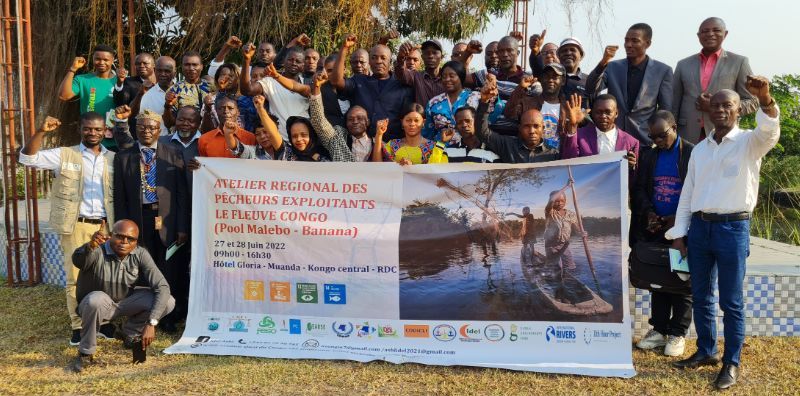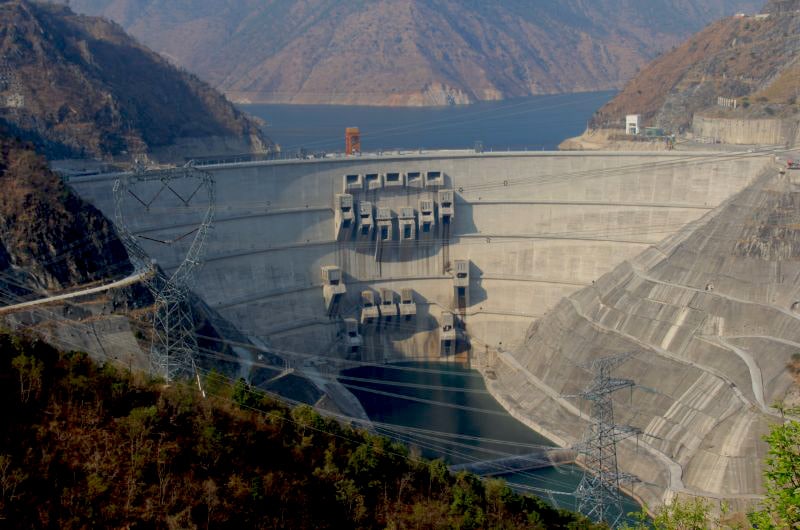Large dams are disastrous for freshwater ecosystems. From preventing salmon migrations, to flooding niche river ecosystems, to blocking nutrient-rich sediment from getting downstream, hydropower is a catastrophe for wildlife. Yet currently, hydropower supplies more than half of our renewable energy. Isn’t cutting our dependence on fossil fuels worth the biodiversity cost of new dams?
The problem with that line of thinking is right there in the question. Dwindling biodiversity and rising emissions are not two separate issues: they are inextricably linked. The ecosystem degradation caused by large hydropower doesn’t just accelerate the global decline in freshwater biodiversity. It also displaces communities, undermines sustainable development, and contributes to climate change.
Green hydropower: fact or fiction?
Although often mis-labelled as renewable, hydropower is not actually net zero. In fact, many hydropower projects are responsible for more greenhouse gas emissions than an equivalent coal-power plant.
Dams transform fast-flowing rivers into large, stagnant reservoirs. They flood vast swathes of carbon-storing forests, wetlands, and peat swamps. When the flooded ecosystems rot, they release enormous quantities of methane gas—much as burning fossil fuels for energy releases greenhouse gasses once trapped in organic matter.
Beyond these direct greenhouse gas emissions, dams also prevent river sediment from reaching the ocean. When allowed to reach the ocean, this sediment not only nourishes highly biodiverse river delta ecosystems, but also traps 200 million tonnes of carbon annually. Again, biodiversity loss directly undermines hydropower’s net zero ambitions.

River deltas, like the Okavango delta pictured here, are some of the most biodiverse ecosystems on earth. Dams pose an existential threat to their survival. Image: © Michel Roggo.
Indeed, the United States and Western Europe are already lessening their dependence on hydropower. Along with its destructive impact on local ecosystems, large hydropower presents a number of logistical challenges that often make it more trouble than it’s worth.
On average, dam construction costs twice as much and takes 50 per cent longer than projections claim—meaning that in reality, it’s just not worth the price. Over time, river sediment clogs dams. The decreased reservoir capacity and damage to machinery severely reduces the amount of energy generated. Climate change and rising water demand means lower river volume, and hence shrinking hydropower capacity.
Inga 3: A case study in destructive hydropower
Yet the global North has proven less willing to apply this knowledge to hydropower investment in less wealthy nations. In the Democratic Republic of the Congo (DRC), the proposed Grand Inga Dam would be the largest hydropower project in the world. The project builds on the legacy of Inga I and II, two dams constructed in the 1970s and 80s. Today, Inga 1 and 2 run at less than 50 per cent capacity because of sediment build-up.

The vast walls of Inga I and II have profoundly disrupted the flow of the Congo River. Image: Alaindg CC BY 2.5
Rather than investing in the maintenance and modernisation of the existing dams, the international finance community and the government of the DRC are pushing for the construction of Inga 3, the next stage in the project. The dam would displace 37,000 people and cost 14 billion dollars (with overshoot nearly inevitable). 90 per cent of Congolese people, who remain disconnected from the national grid, would likely be unable to access the energy it generates.
Instead, most of the power generated by Inga 3 will fuel destructive mining projects or be converted into hydrogen for export, allowing citizens of wealthier nations to benefit from the energy the dam generates while avoiding its negative social and environmental impacts. All for inefficient energy that probably won’t even be ‘low carbon’.
In the DRC, Synchronicity Earth supports CORAP, or the Coalition of Civil Society Organisations for the Monitoring of Reforms and Public Action (CORAP). CORAP advocates for a just energy future in the DRC, with a focus on preventing the construction of Inga 3, and instead prioritising decentralised solar and wind energy for the benefit of the Congolese people, rather than big business or the international market.
CORAP lobbies the government while collaborating with local people—including a group of fishermen who oppose Inga 3 because of the catastrophic impact it would have on freshwater fish populations in the Congo River. These fishermen know that, beyond their greenhouse gas emissions, negative social impacts, and destructive impact on the surrounding environment, large hydropower projects just aren’t worth the freshwater biodiversity cost.

Congolese fishers unite in opposition to Inga 3. Image: © CORAP.
Unprecedented decline: how dams destroy freshwater ecosystems
The fishermen of the Congo River, like many communities around the world, depend on the river’s unique biodiversity to feed their communities and maintain sustainable livelihoods. Around the world, people also rely on freshwater ecosystems for everything from cultural connection and recreation, to water purification and climate regulation.
The abundance of life in freshwater ecosystems declined by 83 per cent between 1970 and 2018, far eclipsing the rate of loss in either terrestrial or marine ecosystems, and hydropower is a primary culprit. Dams disrupt migratory patterns, preventing many fish from reaching breeding grounds or following food as the seasons change. Trapped sediment contains nutrients, starving ecosystems and species downstream of the dam.

A river’s surface conceals lush underwater meadows, miniature forests, and diverse communities of fish, amphibians, and insects. Image: © Michel Roggo.
In a river, differences in the speed and depth of the water create numerous distinct habitats. Many species are adapted to a single area with highly specific water conditions. Take two points 100 metres apart on the lower Congo River, and you may encounter entirely different wildlife. Dams eliminate these local characteristics, replacing a dynamic network of distinct niches with a single stagnant reservoir.
In hydropower reservoirs, species that once inhabited separate habitats are now forced to compete, while invasive species flourish. The subsequent loss of biodiversity provokes extinction, especially of the endemic species unique to specific swathes of the river. It also reduces the overall abundance of life, destroying the livelihoods of local people who depend on freshwater ecosystems and their services for sustenance, and severing the cultural and spiritual connections between communities and rivers.
Today, barely one-third of rivers remain free-flowing, in large part due to dams. These projects have fragmented ecosystems, profoundly disrupted traditional ways of life, and displaced up to 80 million people. Despite mounting evidence that dams contribute to climate change, impoverish local people, and harm biodiversity, more than 3,700 new large and medium hydropower dams are planned or under construction.

China’s Xiowan Dam is one of many new dams built or planned along the Mekong. Image: International Rivers (CC).
Cause for hope: the growing movement against hydropower
Synchronicity Earth’s Freshwater Programme supports organisations working to halt destructive hydropower projects, protect freshwater biodiversity, and nurture community livelihoods and well-being.
Many of our partners oppose dam proposals in their own local rivers. Some also advocate for policy changes at the national or international level, from the landmark inclusion of “inland waters” alongside land and sea in the 2022 Kunming-Montreal Global Biodiversity Framework, to the IUCN’s Resolution to protect the lower Congo River from large hydro-electric dam developments. Since 2017, we have provided core funding to International Rivers, who have partnered with more than 800 community organisations to delay or halt 218 destructive dams.
From dam removals to the prevention of new projects, a move away from destructive hydropower is possible. In the United States, the Indigenous Peoples of the Pacific Northwest are celebrating the largest planned dam removal in history. After a century of shrinking populations, the Endangered coho and Chinook salmon of the Klamath river will revive their ancient migration. And from the Congo River to the Mekong, communities are mobilising to protect their own freshwater biodiversity while building sustainable livelihoods. If we are to build a liveable and equitable future for all life on earth, we need flourishing, free-flowing rivers. Around the world, our partners and others like them are making that future possible.

Baby freshwater turtles make their way into the Jurúa river, where they will spend their adult lives. Image: © Instituto Jurúa.






